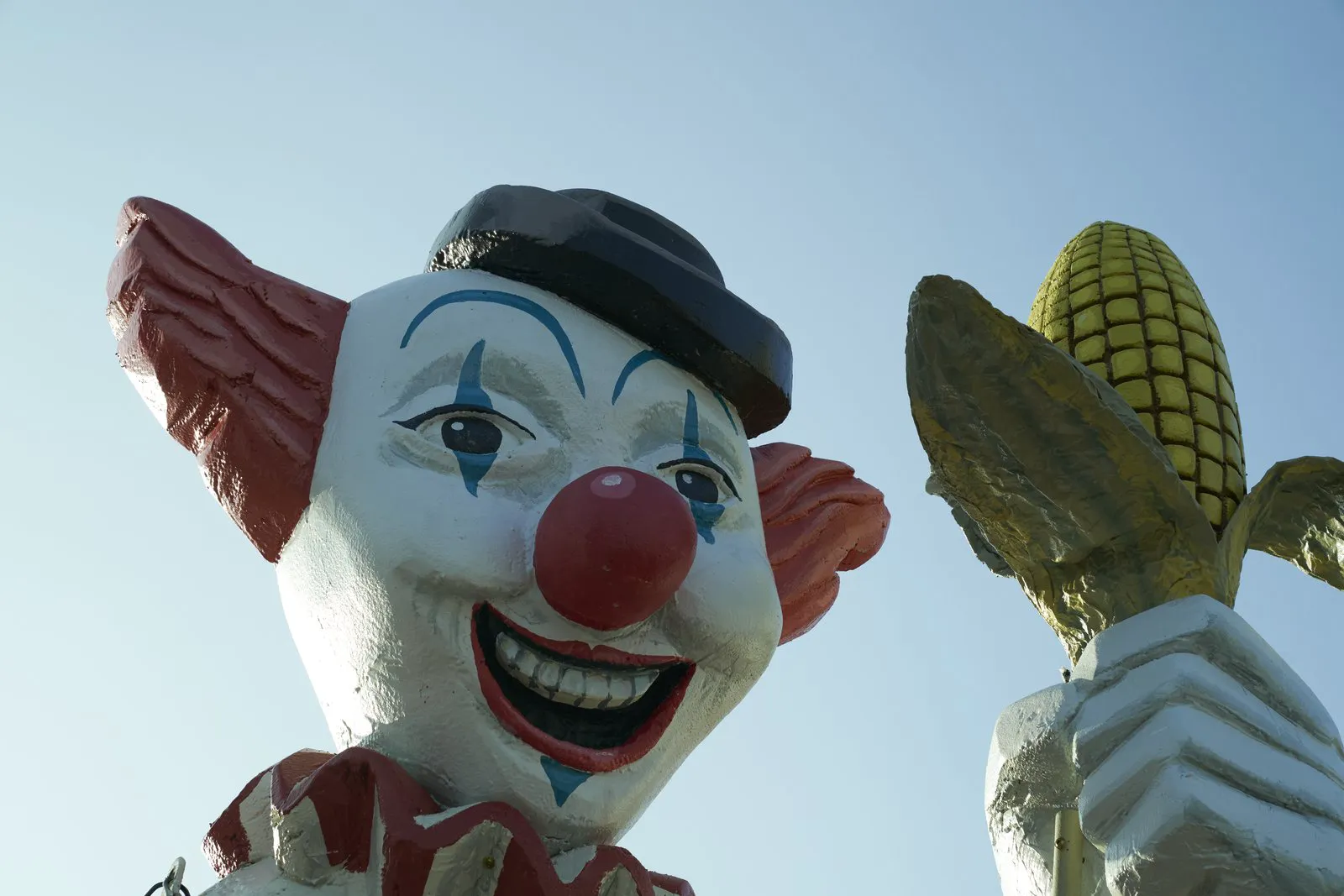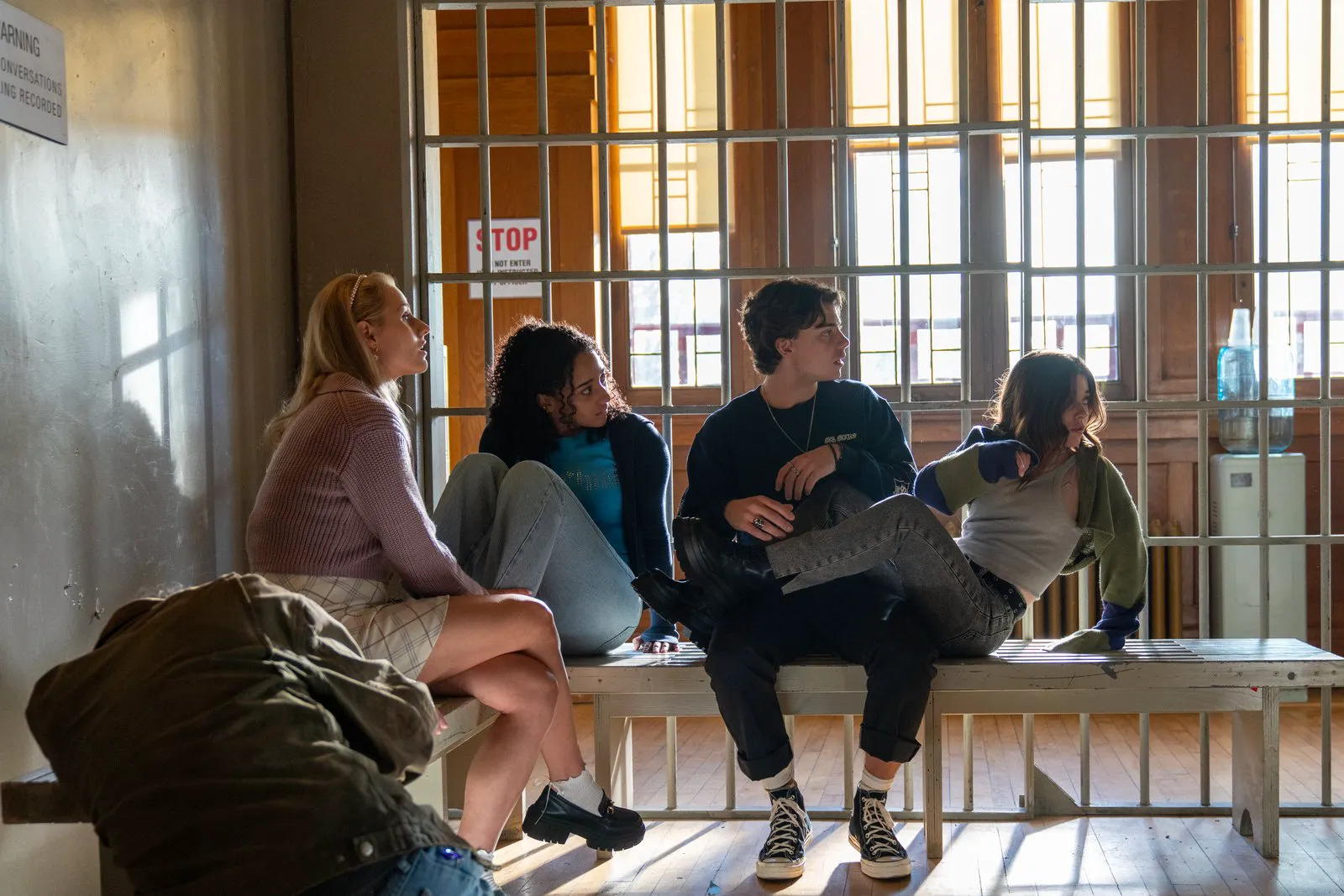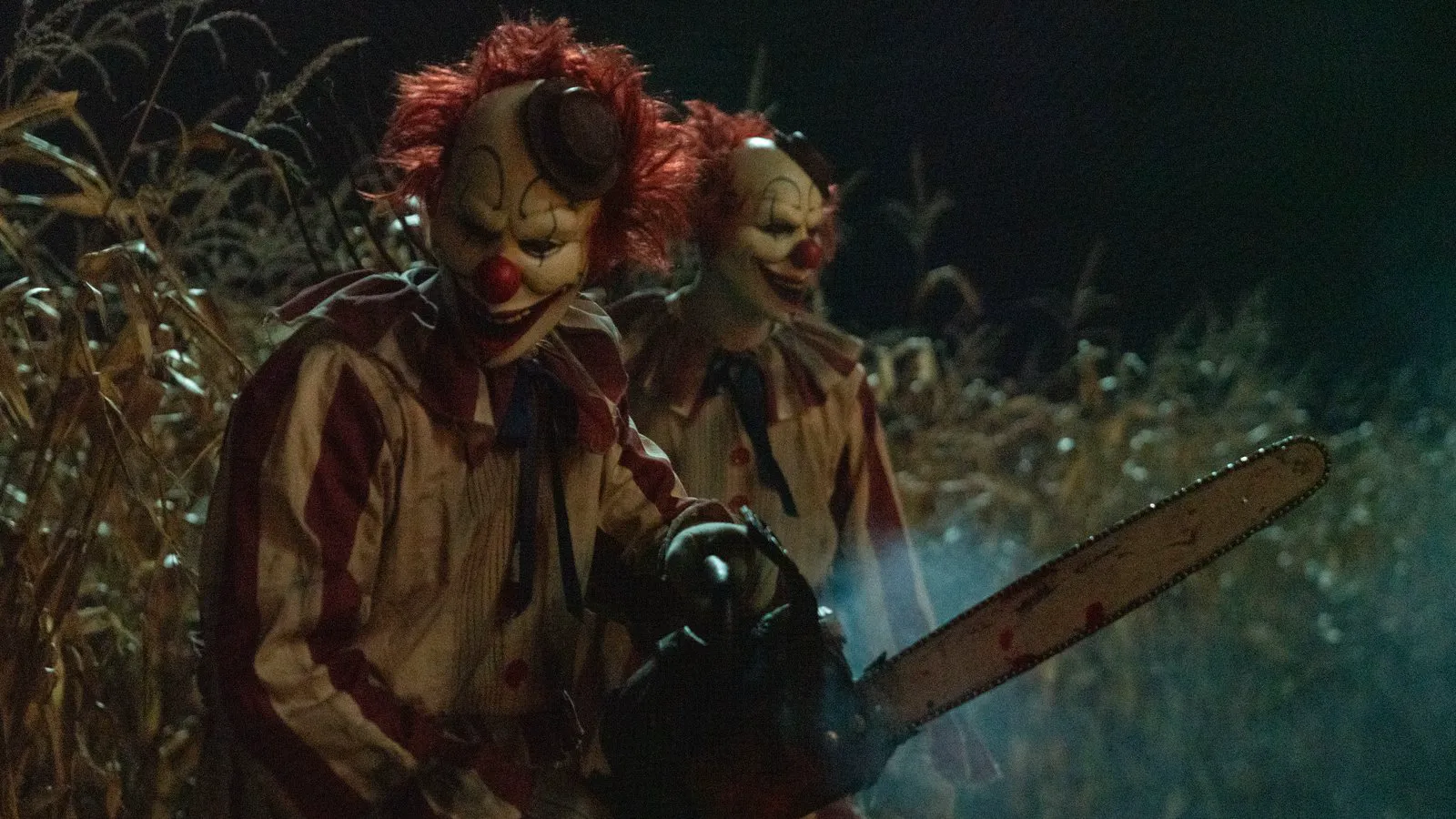From Cornfields to Nightmares: A Fresh Take on Horror in “Blood Harvest”
Quinn (Katy Douglas), along with her father (Aaron Abrams), relocates to the quaint American town of Kettle Springs. Leaving behind memories of her late mother, old friends, and familiar streets in Philadelphia, she embraces a new chapter in Missouri. Quinn quickly integrates into her high school’s social scene and gradually adjusts to her changed surroundings. However, something seems amiss with the adults in town, and the local mascot is particularly unsettling: a clown named Frendo, eerily reminiscent of Pennywise. What’s even more disturbing is that their similarities appear to extend beyond mere appearance.

Still from “Blood Harvest”
The immediate association with “Blood Harvest” is undoubtedly Stephen King’s “It,” particularly the Andy Muschietti adaptation. A clown, a group of high schoolers, a small town – the parallels are undeniable. This makes the filmmakers’ decision to steer the narrative in a different direction all the more daring. “Blood Harvest” leans more towards a comedic slasher than a serious exploration of trauma, as was the case with King’s adaptation.
On one hand, “Blood Harvest” playfully navigates genre tropes: sex equals death, splitting up equals death, and non-white skin also equals death. The maniac(s) refrain from removing their masks until the very end and favor bladed weapons over firearms. On the other hand, the film cracks a smile, occasionally indulging in humor. The secret to its appeal lies in this balance – “Blood Harvest” avoids the forced clowning of recent “Scream” installments and the monotonous seriousness of “Saw.” The horror element certainly outweighs the comedic, but not to the point of eliciting outright laughter, with the exception of a romantic plot twist at the end, which, however, may not resonate with all viewers.

Katy Douglas as Quinn in a still from “Blood Harvest”
Another strength of “Blood Harvest” is its coherent plot with a well-thought-out ending that doesn’t render the entire film a pointless exercise. This is likely due to its literary source material – Adam Cesare’s 2020 novel of the same name (originally titled “Clown in a Cornfield”). Thanks to this, the film avoids the now-ubiquitous nostalgia for the 1980s, featuring only a brief prologue from 1991. The rest of the runtime is dedicated to the present day – with mobile internet, but thankfully without instantly outdated memes or criticism of social media obsession.
Slasher Done Right
“Blood Harvest” also delivers on the kills, which are a major draw for many slasher fans. Without excessive gore or twisted inventiveness, the antagonist’s skill with knives, pitchforks, and saws is still impressive. While the “Harvest” doesn’t claim hundreds or even dozens of victims, each kill is memorable even days after watching.

Still from “Blood Harvest”
Despite its seemingly pre-ordained place in the niche of low-budget horror clones exploiting a familiar villain, “Blood Harvest” transcends its marketing label. It stands even further apart from films like “Zombeavers” or “Winnie the Pooh: Blood and Honey,” whose sole value lies in their outlandish premise. “Harvest” is surprisingly balanced and unpretentious, and that’s precisely why it shines. Without blindly copying the tropes of its predecessors, without aiming for a “return to hardcore hatred,” without references to references to references, without attempting to deconstruct familiar narratives, Eli Craig has gifted the audience exactly what it craves most – an hour and a half of vibrant entertainment with an engaging plot and a surprisingly unexpected resolution.
The Future of “Blood Harvest”
The author of the literary source material, Adam Cesare, has already written not one, but two sequels. Therefore, it’s quite possible that “Harvest” will have a sequel, and who knows, it might even achieve a cult following comparable to Stephen King’s “It,” albeit only within narrow circles of connoisseurs.